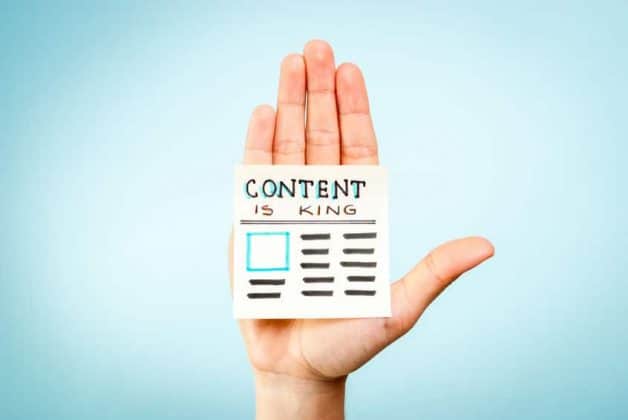Even though Facebook and Twitter are arguably the most popular of the social networks, diversification is a huge trend in this modern marketing landscape. Depending on the audience you’re targeting, being active on a single network may not enough. According to The Content Marketing Institute, the most successful B2B marketers are active on an average of seven networks.
Companies and content marketers need to start taking social media seriously and become active in the various social networks related to the audience in their industry. Brands that can build a following by being genuinely interesting and posting engaging, entertaining and relevant content create far more opportunities for themselves to sell to consumers.
Today, Facebook hosts over 1.3 billion users worldwide; 50 percent of those users, according to Facebook, are online at any given time sharing one million links every 20 minutes. Primarily, the site is about networking with friends, and the average user has about 130 friends. As you can imagine, the platform offers endless promotional opportunities for your content.
Beyond the networking of friends, the site has had a huge amount of success with platform applications. Ranging from games to contests to promotions targeted to the user’s profile, Facebook claims that more than 70 percent of its users engage with a variety of applications.
Getting Started
The first step is to create a Facebook Page for brands and companies. Using a personal Profile as a business presence is frowned upon, and Groups have limited functionality as marketing platforms.
There are three main locations on the site that you can choose to display your advertised content:
- Newsfeed: The most popular of the Facebook advertising placements, these ads show up seamlessly in a user’s feed along with the content that they see from their friends and the people that they follow.
- Mobile: Earlier this year, Facebook stated that there were 1.01 billion mobile monthly active users on the social network – that is a crazy amount of people. If your content is optimized for mobile, this is an avenue that can greatly enhance your content’s visibility.
- Right-Hand Column: This placement can be seen below the “Trending” topics section. The benefit of this placement is that the ad will move down as the user scrolls through their feed.
You can also share exclusive discounts, promotions, or information through your Facebook posts to encourage followers to act fast! Depending on your industry, try offering special deals or discounts to your followers to keep them interested.
Even if they do not immediately buy or use your service, they will keep your brand in mind and search for your brand in the future. As you gain new followers or clients, reward them by providing exclusive information about your industry. For example, promote an in-depth free guide through Facebook and get those new followers further down the sales funnel.
Audience Insights
It might sound obvious, but the more you know about your audience, the more effective your storytelling. With Facebook’s Audience Insights, you can measure which type of content is resonating with your Facebook followers. The tool is designed to help marketers learn more about their target audiences in order to create better content for the future. You can collect anonymous information such as:
- Demographics: Age and gender, lifestyle, education, relationship status, job role and household size.
- Page likes: The top Pages people like in different categories, like women’s apparel or sports.
- Location and language: Where do people live, and what languages do they speak.
- Facebook usage: How frequently are people in your target audience logging onto Facebook and what device(s) they are using when they log on.
- Purchases activity: Past purchase behavior (i.e. heavy buyers of women’s apparel) and purchase methods (i.e., in-store, online).
Advertising on Facebook allows you to reach one of the largest audiences in the world; never before have we been able to reach such a massive following with such accuracy and relevance.
Similar to Facebook, twitter has a massive network with over 500 million users. The network acts as an efficient tool that improves communication and allows its users to closely interact with their favorite brands.
Twitter can be a great platform for promoting content and, subsequently, your business. The primary application for Twitter is to keep followers informed about the cool products and services that your business can provide. The secondary application is to actively engage the phenomenon of crowd-sourcing.
By searching for industry-related keywords or phrases, you can discover specific trends, uncover frequently asked questions and monitor what your competitors are offering. While delivering valuable information in small doses, you can effectively build your client base and connect with a broader audience.
Promoted Tweets
Promoted tweets are similar to organic tweets because they can be retweeted, replied to and favorited by anyone. Keep in mind that Twitter clearly identifies promoted tweets, so there will be no surprises to viewers. Promoted tweets can include links to websites, hashtags and various content mediums. You can also promote tweets that were originally published organically. However, be aware that only one promoted tweet will appear in a user’s timeline at any given time and can appear in any of the following places:
- Home timelines
- At the top of relevant search results
- Search results for promoted trends
- On Twitter’s official desktop or mobile clients like TweetDeck, Twitter for iPhone and Twitter for Android, among others
- Syndicated to some third-party Twitter clients like HootSuite
Promoted tweets allow you to tweet to specific users, during specific moments, even to non-followers. Promoted tweets can use interests, gender, location, language spoken, or device used to target the right audience for your content. It can even target by similarity to existing followers.
Similar to Facebook and Google, Twitter’s pricing system is based on bidding. Start by setting the maximum amount you’re willing to spend per follow or click and Twitter will give you suggestions for what you should bid to optimize your campaign. Twitter provides useful tools that allow you to see how each of your tweets is performing. After a few days of running promoted tweets, be sure to check back to gauge how the campaign is working to adjust and improve your efforts.
Hootsuite
HootSuite was originally created for improving Twitter engagement by optimizing and managing posts, but it also allows you to post from personal Facebook and LinkedIn accounts. This tool enables a brand to create a new post and send to any one, two or all of the connected social media accounts.
HootSuite’s main mission is to help schedule posts across many different social networks. Allowing anyone to easily plan ahead and actively engage with the most followers possible. Simply select the date and time, and let Hootsuite post that awesome content for you.
A bonus feature of HootSuite is their built-in URL shortener, which will also track important social metrics in the “Analytics” section. This means you can create full reports on engagement, clicks, and collective data – each for specific social accounts. This is an important promotional tool that can save time for any content marketer.
LinkedIn is established as the premier social networking site devoted solely to professionals. It is said that LinkedIn’s 277 million members include an executive from every Fortune 500 company. LinkedIn remains the best social networking site to market your business-to-business (B2B) products and services because of this special demographic.
Even for business-to-consumer (B2C) companies, LinkedIn is important. Creating a branded LinkedIn profile has many benefits for your company such as showcasing your authoritative stance within the industry and allowing you to create sponsored updates for more effective content promotion.
Sponsored Updates
Similar to Facebook, LinkedIn created an ad unit called LinkedIn Sponsored Updates that puts promoted content in the newsfeeds of followers.
LinkedIn Sponsored Updates consist of a headline, description (up to 75 characters), your name or company name, small image and a URL. Currently, you can specify which LinkedIn members view your ads by selecting criteria such as job title, job function, industry, geography, age, gender, company name and more. Similar to Twitter and other social media networks that offer paid advertising, you set a maximum budget and only pay for the clicks or impressions that you receive.
Here are a few tips for effectively using this, and other promotion features, on LinkedIn:
- Share content of high value only: These include expert-level blog posts, eBooks, free guides or white papers. LinkedIn audiences generally prefer more substance in their content than a list or “top tips” blog post.
- Share content that has great images: You can’t upload an image with content you’re sharing on LinkedIn. Instead, you are limited to choosing one of the images on the page you’re sharing. Selecting an image on the shared page that will grab reader’s attention is essential to successful LinkedIn promotion.
- Don’t forget to target LinkedIn groups: While you can target based on location, title, and industry, LinkedIn groups get right to the heart of what people are most interested in. Groups on Google Plus are similar to “liking” a Facebook page.
According to LinkedIn, the best performing ads are relevant to the target audience and written with clear, compelling words. LinkedIn suggests that you highlight special offers, unique benefits, white papers, free trials or demos to get people’s attention. They also recommend that you include strong call-to-action phrases like “Try,” “Download,” “Sign up” or “Request a quote.”
As we know, Pinterest is one of the founders of photo album-style content sharing that has blown up over the past five-to-ten years. Content marketers quickly discovered the advantages of this photo distribution channel when promoting content; not only can you drastically raise the visibility of the content, but also encourage it to be shared to an even bigger audience.
Once you create a branded profile on Pinterest, be sure to add Pin It! buttons that appear when a user hovers over an image (keep in mind these don’t function on mobile browsers) and Pin It! share buttons that appear below all the images on your website. This will encourage people to pin your content for you, spread your content around Pinterest and drive traffic back to your site. It will also encourage visitors on your website to start following you on Pinterest for more content.
Here’s a quick tip for increased brand recognition: add a small branded logo to the corner of all your images. This is a small and subtle addition to your pins that can amplify your brand name tremendously.
Instagram is quickly becoming a content marketer’s best friend. Instagram has 150 million monthly active users who post and share 55 million images or videos per day – that is a massive audience that brands can no longer afford to ignore. Instagram is no stranger to brand engagement, with over 70 percent of top brands using it and roughly one out of five brands posting once a day.
#hashtags
In case you haven’t heard – those #hashtags are actually important. In fact, over 80 percent of Instagram posts by top brands include at least one hashtag. To get a sense of what the Instagram community is interested in, check out their list of trending hashtags.
Integrating hashtags in your posts is an important way to attract new followers but use them cleverly. As with most of life, moderation is best. Use related hashtags for content discovery but don’t overdo it. One-to-three hashtags is a good rule of thumb.
Branded social media profiles have been a proven marketing tool for a few years now, so if your brand has not built a presence through the various available channels you are already falling behind. Not only can social media help gather a larger following and boost traffic, it can directly influence leads and conversion rates for companies in any industry.






